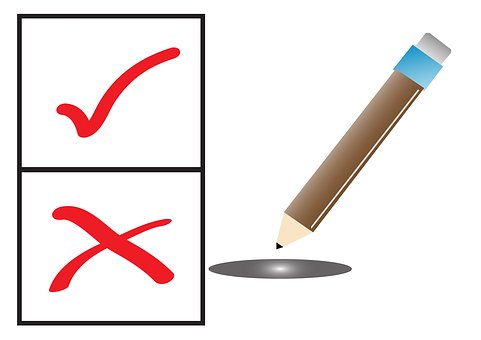 In today's world, we are bombarded with polls, especially around election time but did you know political polls have been around since 1824 when the first one was conducted by the Harrisburg Pennsylvanian. On July 24th, they published the results of a straw poll on the upcoming election between John Quincy Adams and Andrew Jackson.
In today's world, we are bombarded with polls, especially around election time but did you know political polls have been around since 1824 when the first one was conducted by the Harrisburg Pennsylvanian. On July 24th, they published the results of a straw poll on the upcoming election between John Quincy Adams and Andrew Jackson.At this time, newspapers were not very impartial and were more often seen as mouth pieces for political parties but they needed to move away from this and become more objective to expand readership. Unfortunately, straw polls were really extremely objective but were used until the beginning of the twentieth century.
During this time period, many newspapers published copies of the ballot within their pages, urging readers to cut it out before filling it in and either mailing it in or placing it in a special ballot box at the newspaper. In fact, newspapers suggested readers buy more copies to add more ballots or to "stuff the ballot box" thus encouraging more sales and sacrificing accuracy.
Pretty soon pollsters began using telephone directories, voter lists, and automobile registrations to create sample lists. They'd often choose say every 10th name to make the sample they'd contact for data on upcoming elections but this method had a bias towards only the wealthier people. People were contacted using the mail and asking them to return the form.
They discovered mail was not the best way. To get better results, pollsters began using the personal interview where they passed out pencils and ballots to people on the street. Sometimes, they'd select a specific area to get information from say white or blue collar workers because they wanted a selection from cross economic groups.
Most newspapers conduction local or regional polls but beginning in the 1890's, several newspapers including the New York Herald Tribune began polling over larger areas. By 1912, these polls covered areas containing up to 35 states. In 1924, the Hearst empire tried to poll 43 states but there was error rate of 6 percent, however when they redid it in 1928, they managed to cover 46 states with only a 3 points of error.
Then in the 1930's the Literary Digest (the Time or Newsweek of the era) sent out over 20 million ballots covering 48 states. They predicted Roosevelt would win the 1932 election with 59.85% of the votes. Although many questioned their sample as focusing on the more well to-do, Roosevelt won the election with 59.14% of the vote. In addition, they predicted he would take 42 states for 474 electoral votes compared to the actual 41 states with 472 electoral votes.
They began crowing about their success and were ready to predict the results of the 1936 election when a man popped up out of New Jersey saying their predictions were all wrong! More about that tomorrow.
Let me know what you think, I'd love to hear. Have a great day.
No comments:
Post a Comment